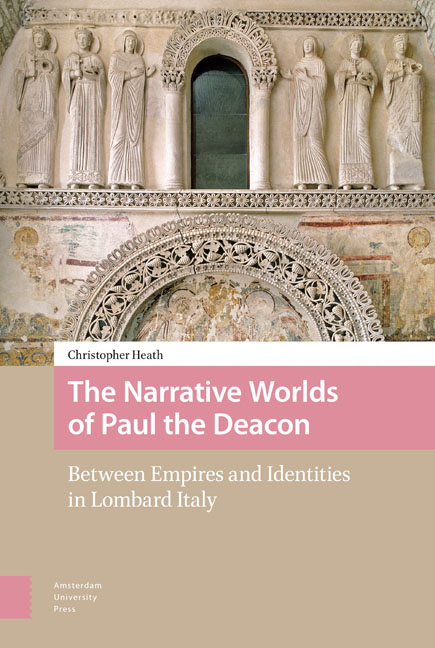Book contents
- Frontmatter
- Dedication
- Contents
- List of Tables and Diagrams
- Acknowledgements
- List of Abbreviations
- Introduction
- 1 Vir valde Peritus: Paul the Deacon and his Contexts
- 2 The Early Narratives
- 3 The Historia Langobardorum: The Structure of Paul’s World
- 4 The Historia Langobardorum: The Six Books in Detail
- 5 Conclusion
- Bibliography
- Index
1 - Vir valde Peritus: Paul the Deacon and his Contexts
Published online by Cambridge University Press: 10 December 2020
- Frontmatter
- Dedication
- Contents
- List of Tables and Diagrams
- Acknowledgements
- List of Abbreviations
- Introduction
- 1 Vir valde Peritus: Paul the Deacon and his Contexts
- 2 The Early Narratives
- 3 The Historia Langobardorum: The Structure of Paul’s World
- 4 The Historia Langobardorum: The Six Books in Detail
- 5 Conclusion
- Bibliography
- Index
Summary
The Downfall
For the year 774 the Annales Regni Francorum record:
Et revertente domno Carolo rege a Roma et iterum ad Papiam pervenit ipsum civitatem coepit et Desiderium regem cum uxore et filia vel cum omni thesauro eius palatii. Ibique venientes omnes Longobardi de cunctis civitatibus Italiae subdiderunt se in dominio domni gloriosi Caroli regis et Francorum.
And returning from Rome, the Lord King Charles came to Pavia again, seized the same city and King Desiderius with his wife and daughter together with all the treasure of his palace. And all the Lombards from all the cities of Italy came there and placed themselves under the power of the glorious lord King Charles and the Franks.
The Liber Pontificalis, not known for a positive view of the Lombards, reported that the ira Dei (the anger of God) had ‘raged and stormed against all the Lombards’ and that Charlemagne, the excellentissimus Francorum rex (most excellent King of the Franks) ‘had subjected the entire kingdom of the Lombards to his power’ (… et suae potestati cunctum regem Langobardorum subiugavit). The siege of Pavia, within which the final Lombard king Desiderius (r. 757-774) had sheltered, and its surrender marked both the conclusion of Charlemagne's (r. 768-814) campaign in Italy and the end of an independent Lombard kingdom. This kingdom had maintained its survival for over two hundred years despite invasions of Avars, Franks, and Byzantines. Sixteen years later Charlemagne was to mark his hegemony in the West with his imperial coronation, which attached the regnum Langobardorum to a revived western Roman Empire that had comprehensively eclipsed Byzantine power in northern and central Italy.
Yet Charlemagne's success at this point was not the first attempt to forge a new political configuration that encompassed the whole Italian peninsula. Lombard kings such as Liutprand (r. 712-744), Aistulf (r. 749-756), and Desiderius had all attempted to create a kingdom that controlled all of Italy. An increasingly self-confident orthodox ideology, a notable element of the ‘New Kingship’ of Perctarit (r. 661-662 and 672-688), and Perctarit's son Cunincpert (688-700), allied with enhanced abilities and territorial ambitions of hegemony, failed to assuage implacable papal antipathy. It was this papal opposition that was to invoke Frankish intervention and the Lombard downfall.
- Type
- Chapter
- Information
- The Narrative Worlds of Paul the DeaconBetween Empires and Identities in Lombard Italy, pp. 19 - 38Publisher: Amsterdam University PressPrint publication year: 2017



